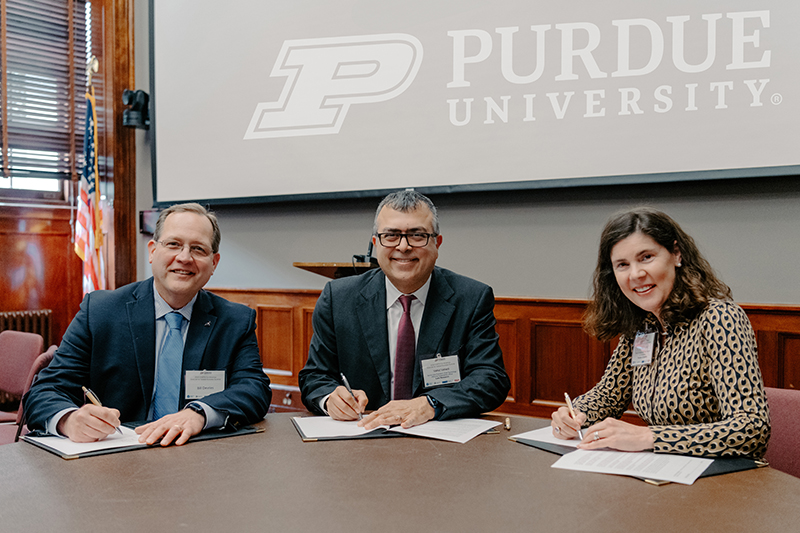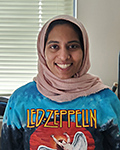|
Issue 76
Stay informed about what's happening in the nanoHUB community by exploring upcoming events, new resources, and community news.
Upcoming Events
Two-part, Hands-on Machine Learning Workshop on Large Language Models (LLMs) for Research
Dates and times
Part I: Thursday, May 2, 2024 from 12:00 – 1:00 p.m. EDT
Part II: Thursday, May 9, 2024 from 12:00 – 1:00 p.m. EDT
Register today and secure your spot in our upcoming two-part, online workshop in the nanoHUB Hands-on Data Science and Machine Learning Training Series. The workshop will highlight the potential of large language models (LLMs) and their applications to research. In Part I on May 2, Dr. Juan C. Verduzco will present, Unlocking the Power of Large Language Models for Research Innovation. In Part II on May 9, Ethan Holbrook will walk you through, Simplifying Computational Simulations: Using Large Language Models for Automated Research in Materials Science, featuring the Large Language model demonstration for LAMMPS tool in nanoHUB.
nanoHUB Community News
Purdue, Dassault Systèmes, Lam Research sign MOU to utilize latest virtual twin technology to transform semiconductor research and workforce development

Purdue University is elevating semiconductor workforce development and research through a new agreement with industry leaders Lam Research and Dassault Systèmes, which will prepare today’s students for future semiconductor careers and drive next-generation breakthroughs in education and technology development.
A key focus of the collaboration will be establishing undergraduate and graduate student team projects centered around virtual fabrication. These projects will utilize the actual tools available at Birck Nanotechnology Center’s cleanroom facility, as well as developing virtual fabrication modules using the Semiverse Solutions platform from Lam Research, which can be incorporated into courses in Purdue College of Engineering curriculum, and hosted on Chipshub.org to be accessed by the broader academic community.
2024 CompuCell3D Multicell Virtual-Tissue Modeling Online Workshop

The Engineering nanoBIO team is pleased to announce the 2024 Multicell Virtual-Tissue Modeling Online Summer School and Hackathon at Indiana University, Bloomington, July 28 to August 4, 2024. Learn to model your biological system of interest with one-on-one help. The workshop will cover CompuCell3D (CC3D) basics, as well as advanced features and modeling topics. The workshop will be followed the next weekend by a 3-day model-building hackathon from Aug 9–11. Participants team up to build research-grade models of biological systems. All experience levels and backgrounds are welcome! For more information, email compucell3d.iu@gmail.com or visit www.compucell3d.org/Workshop24. Register at https://tinyurl.com/CC3D2024.
 West Coast Theoretical Chemistry (WCTC) 2024 West Coast Theoretical Chemistry (WCTC) 2024
UC Merced is hosting the next iteration of the West Coast Theoretical Chemistry (WCTC) meeting on Sunday, May 5th, on the UC Merced campus in Merced, CA. This one-day meeting aims to bring together graduate students, postdoctoral researchers, faculty, and national lab and industry scientists to discuss and present their research across all areas of theoretical chemistry in the form of talks and posters.
Dr. David Strubbe will be leading a tutorial on pedagogical simulations in nanoHUB. Learn more and register at chemistry.ucmerced.edu/wctc-2024.
Michigan Engineering: Summer School for Integrated Computational Materials Education

The “Summer School for Integrated Computational Materials Education,” is a two-week program at The University of Michigan in Ann Arbor, MI, that includes a “crash course” on computational materials science and engineering (CMSE) and focus sessions on educational modules that can be adopted into existing core courses. These computational modules can be implemented into undergraduate-level thermodynamics, kinetics, material physics, and mechanical behavior courses. The second week of the summer school is designed to train graduate students and postdocs to teach these modules to undergraduate students and include practice teaching and feedback sessions.
There are still a few spots available, learn more and apply at icmed.engin.umich.edu/.
Theory-Computational Modeling Postdoctoral Fellowships Openings in Seattle, WA

The University of Washington (UW) invites applications for two Theory-Computational Modeling Postdoctoral Fellowships in the vibrant city of Seattle, WA. These positions offer an exciting opportunity to engage in cutting-edge research at the intersection of chemistry, physics, and engineering. One position is in the field of topological materials, and the second is in molecular dynamics simulations of biomolecules
For inquiries about the positions, please contact Professor Anant M. P. Anantram at anant@uw.edu.
New on nanoHUB

CHIPS for America and Purdue University
In this short talk, Purdue University Chief Semiconductor Officer and founding nanoHUB Director, Dr. Mark Lundstrom, provides a brief overview of the CHIPS for America Act and how Purdue University is participating in the initiative.
DFT with SIESTA, Data Visualization, and a Sophomore-level CURE with the MIT Atomic-Scale Modeling Toolkit
 In this presentation, Dr. David Strubbe discusses how he has been using the MIT Atomic-Scale Modeling Toolkit (which he co-developed) for a sophomore-level modern-physics class as well as an undergraduate/graduate condensed-matter physics class. He focuses on use of the density-functional theory (DFT) code SIESTA and visualization code XCrySDen, for calculations of structure, density, and wavefunctions, and visualization of these quantities as well as of Brillouin zones and Fermi surfaces. He uses the toolkit for a Course-based Undergraduate Research Experience (CURE) in modern physics to illustrate ideas of the particle-in-a-box model via heterojunctions of 2D materials. The students generate new data about heterojunctions, assessing quantum confinement of wavefunctions and their potential suitability for quantum well optoelectronic devices. In this presentation, Dr. David Strubbe discusses how he has been using the MIT Atomic-Scale Modeling Toolkit (which he co-developed) for a sophomore-level modern-physics class as well as an undergraduate/graduate condensed-matter physics class. He focuses on use of the density-functional theory (DFT) code SIESTA and visualization code XCrySDen, for calculations of structure, density, and wavefunctions, and visualization of these quantities as well as of Brillouin zones and Fermi surfaces. He uses the toolkit for a Course-based Undergraduate Research Experience (CURE) in modern physics to illustrate ideas of the particle-in-a-box model via heterojunctions of 2D materials. The students generate new data about heterojunctions, assessing quantum confinement of wavefunctions and their potential suitability for quantum well optoelectronic devices.
Building a nanoHUB Graphical Interface for Exploring Protein Dynamics and Spectroscopy: the PigmentHunter App By Safa Ahad
 In this presentation, chemistry PhD candidate, Safa Ahad, introduces the PigmentHunter app, an online nanoHUB tool that enables “point-and-click” MD-based simulation of excitonic spectra of chlorophyll proteins based on PDB structures. PigmentHunter utilizes and illustrates the extent of nanoHUB’s capabilities with application development. Built using a Jupyter Notebook environment, PigmentHunter uses the nanoHUB science gateway to link a graphical user interface to a high-performance computing backend. This tool classifies recognized pigments in the protein complexes and runs gas-phase molecular dynamics to build excitonic models and predict their optical spectra. In this presentation, chemistry PhD candidate, Safa Ahad, introduces the PigmentHunter app, an online nanoHUB tool that enables “point-and-click” MD-based simulation of excitonic spectra of chlorophyll proteins based on PDB structures. PigmentHunter utilizes and illustrates the extent of nanoHUB’s capabilities with application development. Built using a Jupyter Notebook environment, PigmentHunter uses the nanoHUB science gateway to link a graphical user interface to a high-performance computing backend. This tool classifies recognized pigments in the protein complexes and runs gas-phase molecular dynamics to build excitonic models and predict their optical spectra.
Do you have a suggestion or nanoHUB success story you'd like to share? Use our Contact Us form and you may see your submission in a future newsletter!
|









